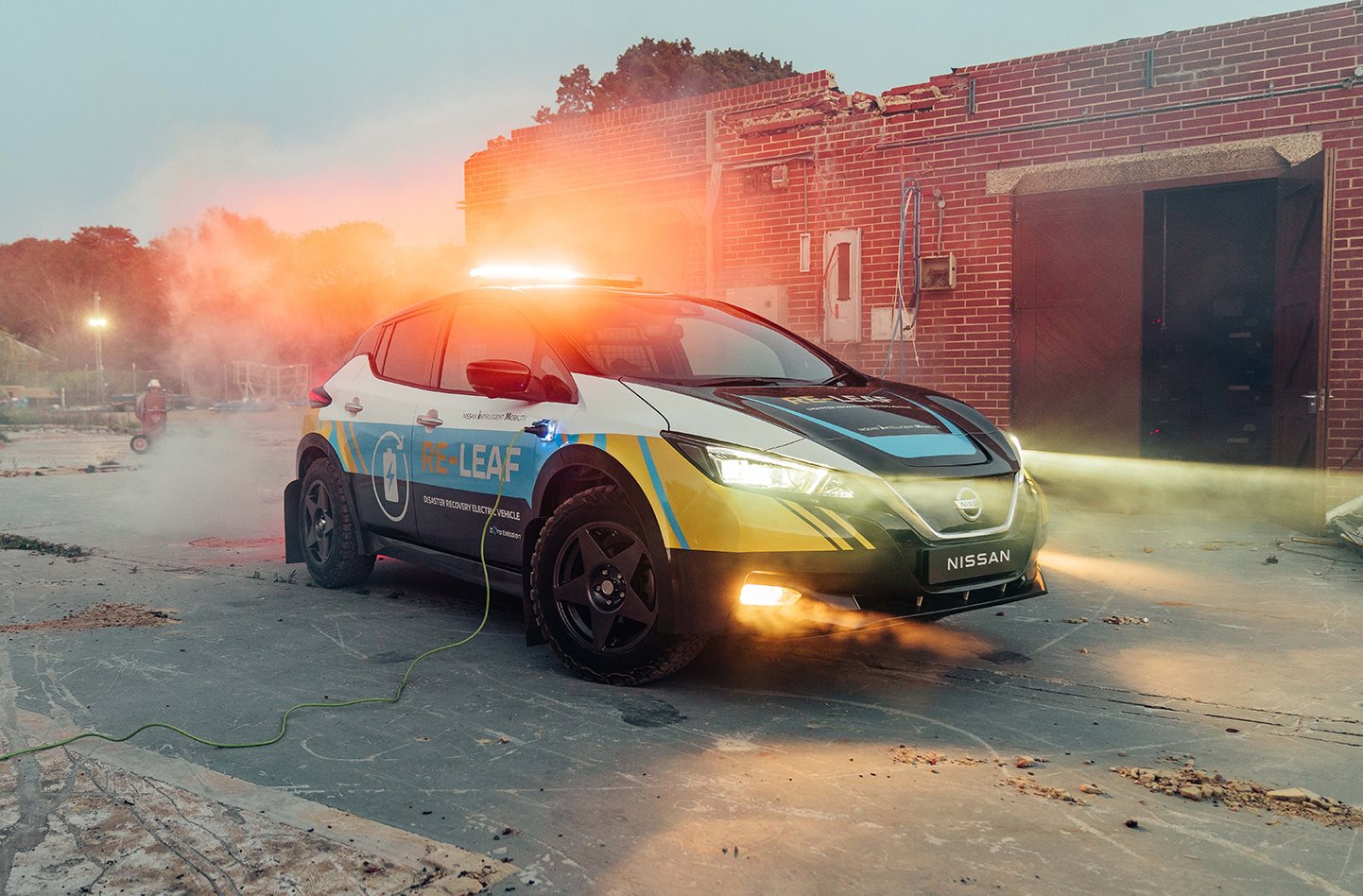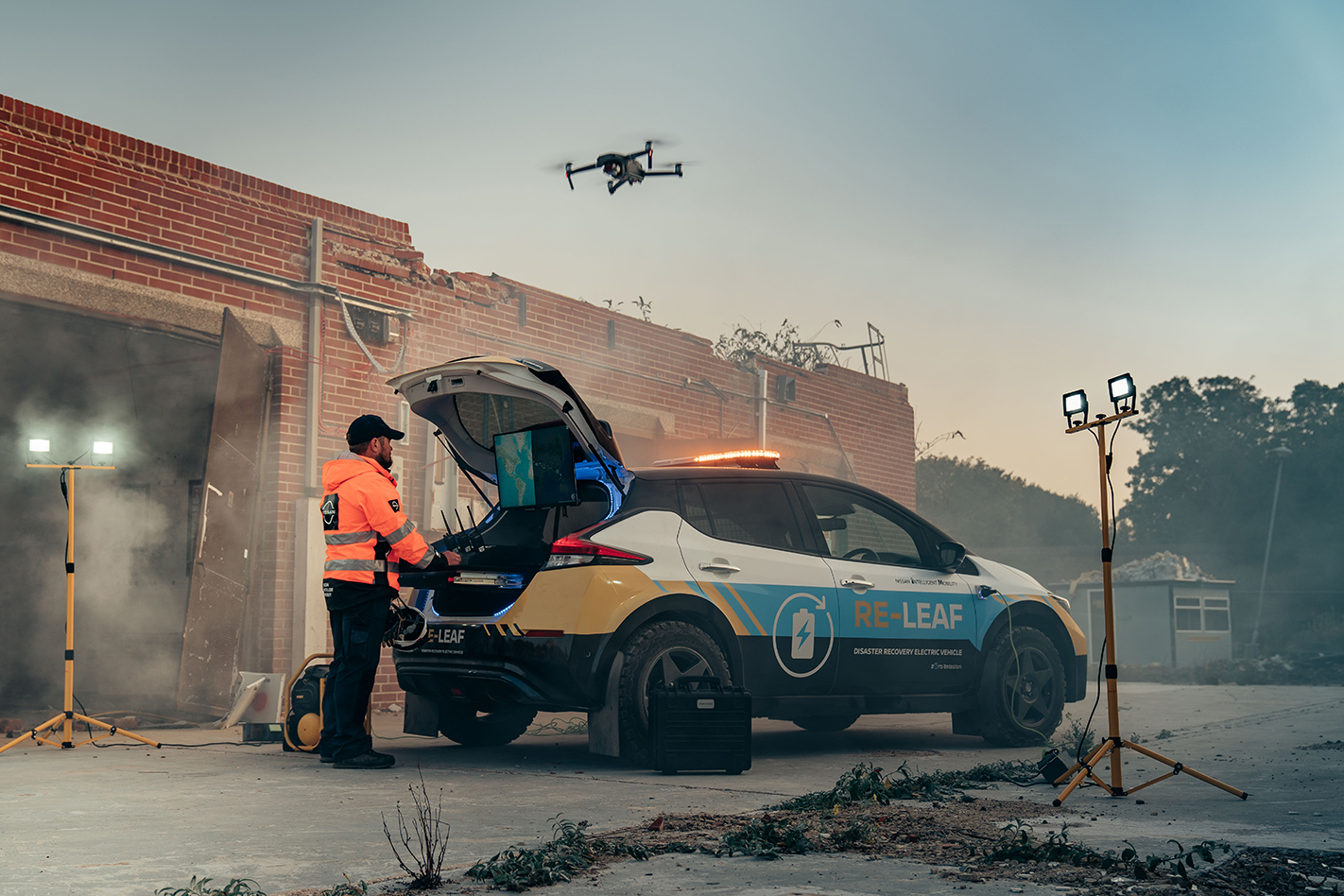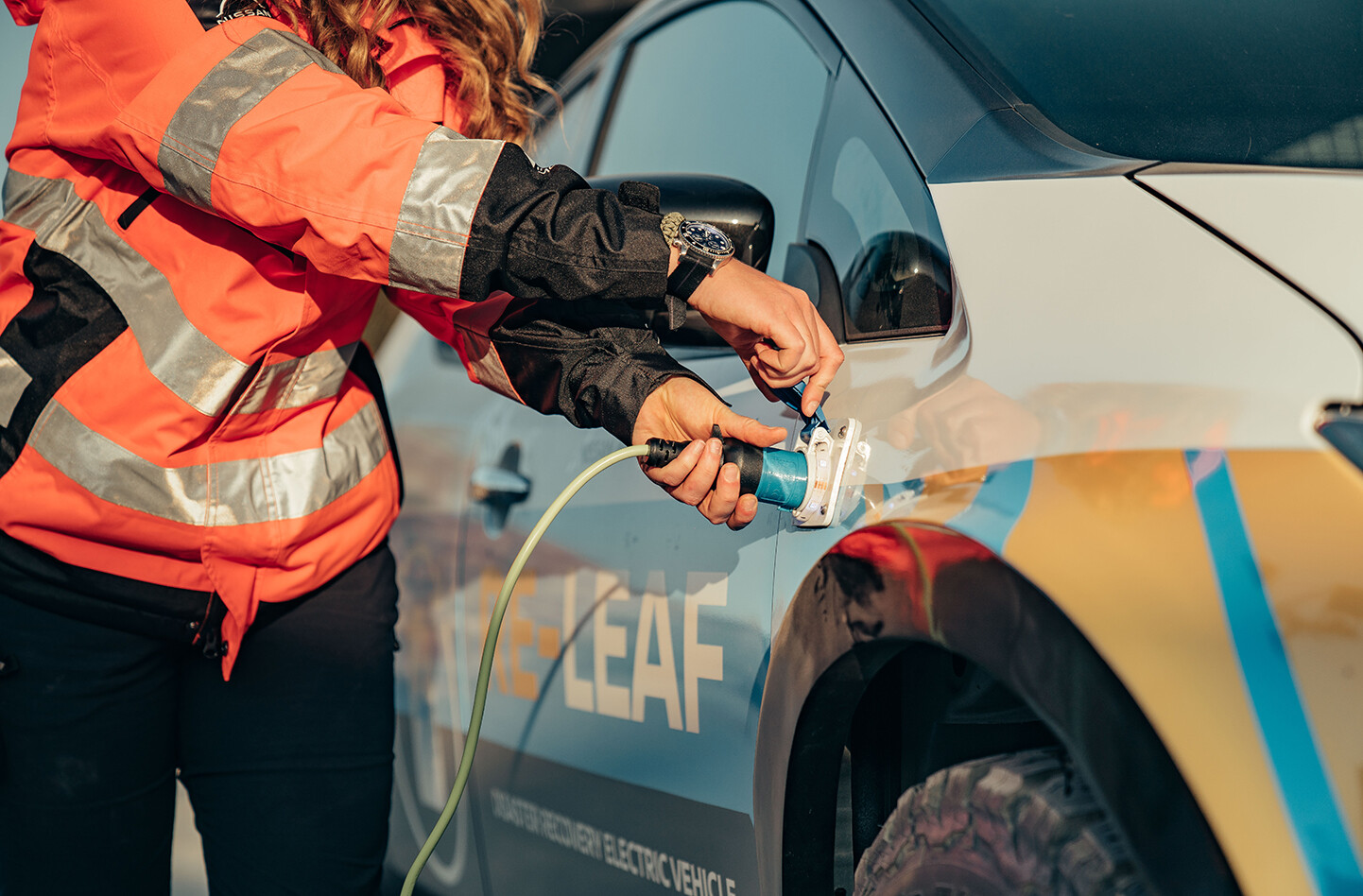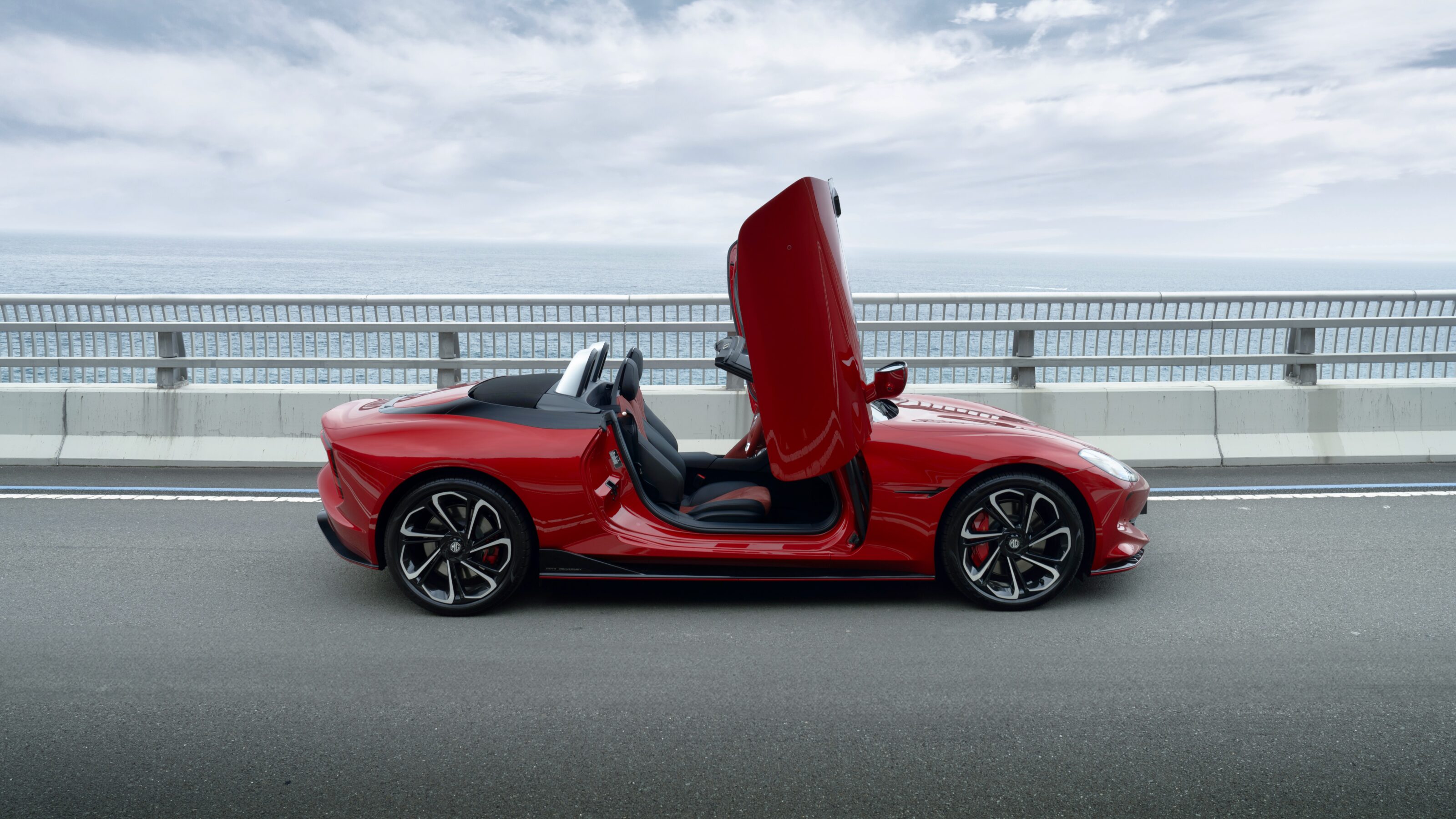
Nissan has revealed a rugged emergency response version of Leaf electric hatchback that’s designed to provide a mobile power supply following natural disasters or extreme weather events.
Called RE-LEAF (get it?) the working prototype is based on the standard Leaf but has a higher 225mm ride height, heavy-duty sump guard, broader wheel arches and 17-inch all-terrain tyres to help navigate debris-covered roads.
It’s designed to reach disaster zones to provide power to assist emergency services and others on the ground via 110-230v electrical sockets mounted on the exterior powered by the car’s high capacity lithium-ion battery.
Inside, the rear seats have been removed and the floor levelled to provide storage for essential equipment.
Once the RE-LEAF arrives at a disaster zone, a bespoke pull-out desk extends from the boot with a 32-inch LED screen and dedicated power supply to run emergency communications.

The RE-LEAF’s integrated energy management system can run medical, communications, lighting and other life-supporting equipment before power can be restored to a disaster-hit area.
It does this by utilising the Leaf’s bi-directional charging ability, a standard feature since the first-generation model was introduced in 2010, which allows it to not only pull power to recharge the high-capacity battery, but also ‘push’ it back to the grid through V2G (Vehicle-to-Grid), or directly to electronic devices through V2X (Vehicle-to-everything) technology.

This allows it to act as a portable power station to power multiple appliances simultaneously, including an electric jack hammer, intensive care ventilator, 100w LED flood light and a 10-litre soup kettle.
Once electricity is restored to the area, the EVs can be recharged and provide zero-emission transport, which would be very useful if fuel supplies are also affected.

“Electric vehicles are emerging as one of the technologies that can improve resilience in the power sector,” said Helen Perry, head of electric passenger cars & infrastructure for Nissan Europe.
“By having thousands of EVs available on standby, either as disaster-support vehicles or plugged into the network through Vehicle-to-Grid (V2G), they’re uniquely capable of creating a virtual power plant to maintain a supply of energy during a major outage.”

While this could prove very helpful in emergency situations, such a capability could become handy for everyday uses as battery power becomes more suitable for trade and recreational vehicles.




